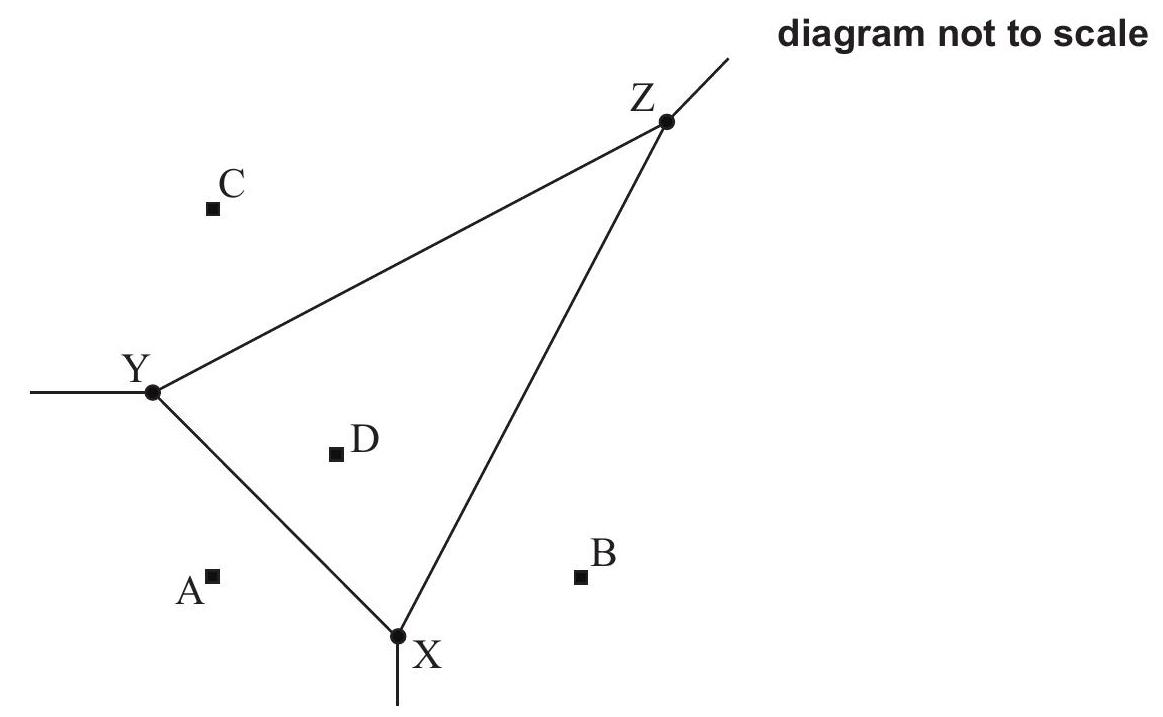The Voronoi diagram below shows four supermarkets represented by points with coordinates and . The vertices are also shown. All distances are measured in kilometres.  The equation of (XY) is and the equation of is . The coordinates of Y are and the coordinates of Z are .
The equation of (XY) is and the equation of is . The coordinates of Y are and the coordinates of Z are .
Find the midpoint of
Note: Award if parentheses are omitted in the final answer.
Find the equation of
attempt to substitute values into gradient formula therefore the gradient of perpendicular bisector is 2 so
Find the coordinates of X
identifying the correct equations to use: and evidence of solving their correct equations or of finding intersection point graphically (M1) A1 Note:Accept an answer expressed as "".
Determine the exact length of [YZ]
Given that the exact length of is , find the size of in degrees
METHOD 1 (cosine rule) length of XZ is Note: Accept 8.94 and 8.9 attempt to substitute into cosine rule Note: Award for correct substitution of XZ, YZ, values in the cos rule. Exact values do not need to be used in the substitution. Note: Last mark may be lost if prematurely rounded values of XZ , YZ and/or XY are used.
METHOD 2 (splitting isosceles triangle in half) length of XZ is Note: Accept 8.94 and 8.9. required angle is Note: Award A1 for correct substitution of XZ (or YZ), values in the cos rule. Exact values do not need to be used in the substitution. Note: Last mark may be lost if prematurely rounded values of XZ , YZ and/or XY are used.
State one criticism of this interpretation
Any sensible answer such as:
There might be factors other than proximity which influence shopping choices. A larger area does not necessarily result in an increase in population. The supermarkets might be specialized / have a particular clientele who visit even if other shops are closer. Transport links might not be represented by Euclidean distances. etc.

